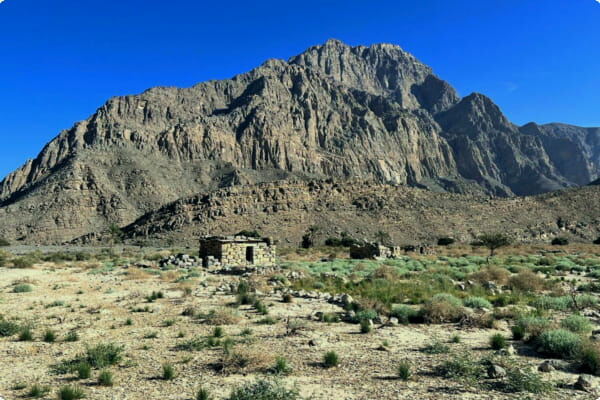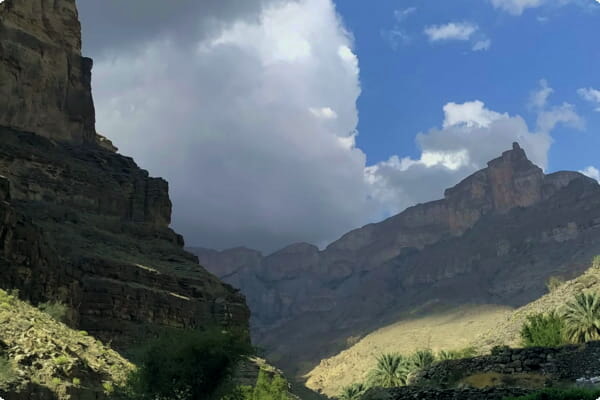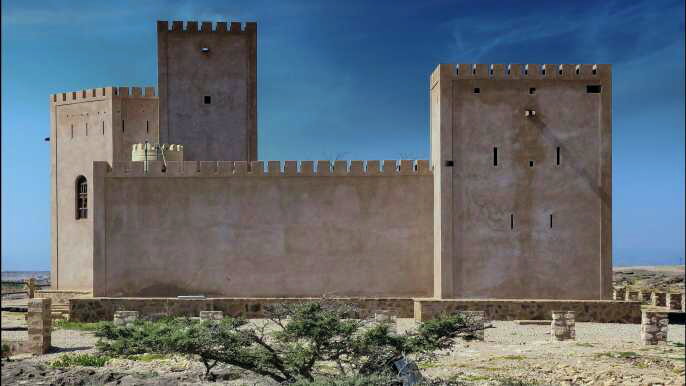Whether you're looking for a relaxing beach getaway or a chance to see the natural wonders of the Arabian Peninsula, Oman is a stunning country that offers a host of attractions to visitors. This Arabian country is officially known as the Sultanate of Oman, and spans the mouth of the Persian Gulf.
Musandam Peninsula
Located at the northernmost tip of the Sultanate of Oman, the Musandam Peninsula is one of the most beautiful places in the Middle East. The pristine beaches, dramatic vistas, and striking mountain patterns make this peninsula a favorite among tourists. The waters are so clear you can see the abundant marine life. You can also do scuba diving in the Musandam waters.
The main town on the Musandam Peninsula is Khasab. It is not a big city, but it does have a large population of Indians, Pakistanis, and Bangladeshis. There are also plenty of hotels. If you don't want to stay in a hotel, you can go camping on one of the many Musandam Peninsula beaches.
Khasab is also home to the Fort of Khasab. This fort was built by the Portuguese in the seventeenth century. It houses a small museum that showcases Omani culture and traditional handicrafts. There are also displays of weapons and jewelry.

Musandam's western coast is home to dramatic limestone scenery. The beaches are pristine, strewn with golden sand, and perfect for beach bumming. The waters are clear enough to see dolphins.
The main industry on the Musandam Peninsula is fishing. There are several fishing packing plants in Bay'ah, and petroleum is extracted from the coast. The peninsula is also home to several wildlife species.
If you are looking to explore the Musandam Peninsula, it is best to rent a four wheel drive vehicle. The roads are not well maintained and full of military installations. If you don't want to spend a lot of time driving, you can take a dhow boat tour. Dhows are Omani wooden boats that are used for fishing and transporting food. The boats are equipped with comfortable cabins and can accommodate 30 people at a time.
Jebel Akhdar
Located in the northern part of the Hajar Mountains, Jebel Akhdar, also known as the Green Mountain, is an extraordinary limestone massif. It is part of the Al Hajar Mountains range and is located in the Ad Dakhiliyah Governorate of Oman. This region is famous for its sweeping mountain views and green terrace fields.
Jebel Akhdar has a range of hiking routes that are easy to navigate. There are many different ways to explore the mountains, from the Village Walk, which traces the old villages, to the more challenging climbs that require four wheel drive vehicles.
The highest point in the mountains, Jebel Shams, stands at 3009m above sea level. The hike to the top of Jebel Shams is recommended for people with some experience. Some local operators offer guided hikes.

The best time to visit Jebel Akhdar is in spring when the flowers bloom. The area is dotted with Damask roses, which are cultivated and used in Omani rose water making. They are also used as air perfume. The mountain is also home to apricots and prized pomegranates.
There are many hikes to choose from, including the Village Walk and the Al Ain Beehive Tombs. Both of these are very popular with tourists. The Al Ain Beehive Tombs are ancient necropolises and were designated a World Heritage Site in 1988.
Jebel Akhdar is one of the top hiking destinations in Oman. Hiking is a great way to see the mountain and experience the culture of the Omani people. The area is also home to many old Omani villages, which are built into the mountain side. The villages also feature local farmers who raise crops.
Sultan Qaboos Grand Mosque
Located in the capital city of Muscat, Sultan Qaboos Grand Mosque is one of the most beautiful places to visit in Oman. It is also one of the most architecturally impressive mosques in the world. The mosque was built between 1992 and 2001 and has been designed by Sultan Qaboos bin Said Al Said.
The mosque is made of white Indian sandstone and has a 103-acre site. The mosque has five minarets, each representing a pillar of Islam. The mosque also has a central dome and beautiful gardens. The mosque also houses a seminar hall, a library and an Institute of Islamic Sciences.
The mosque's main prayer hall can hold 6,500 worshipers. The mosque's main prayer hall also has the world's second largest handmade Persian rug. The carpet was woven by 600 women in four years. The carpet is approximately 230 feet by 200 feet.
The mosque's interior is decorated with Islamic patterns and stained-glass windows. Its courtyards are lined with hibiscus plants. The mosque also has a seminar hall, lecture theatre and a ladies' prayer hall. Its outer corridor features mosaic artworks.
It is open to non-Muslims, as long as they adhere to the dress code. They must wear modest clothing and avoid tight clothing. They must also remove their shoes before entering the prayer hall. Visitors should also wear a head-covering. Children under 10 are not allowed to enter the prayer hall.
The mosque also has a gift shop where visitors can purchase abayas. The abayas are available in different designs. The mosque's cafe also has abayas for rent.
The mosque is open to non-Muslim visitors from 8.30am to 11am every day, except on Friday. Visitors can also take a tour inside the mosque.
Wadi Bani Khalid
Located in the Oman desert, Wadi Bani Khalid is a natural oasis. It is surrounded by tall palm trees, making it perfect for a picnic. It is also known for its crystal clear waters. It is the perfect place for families to visit.
Visiting Wadi Bani Khalid is surprisingly easy. It takes about an hour to drive from Ibra. You can also take an organised day tour from Muscat. The road to Wadi Bani Khalid is well paved.
There are several natural swimming pools at Wadi Bani Khalid. The pools vary in depth and are clear. The main pool is the deepest and largest in the Wadi. It is surrounded by palm trees and is a popular swimming destination.
The pools are filled with water from a few small springs. The temperature of the water is cool, making it perfect for a relaxing swim after a hot day.
You will also find a number of caves at Wadi Bani Khalid. These caves are filled with crystal clear water that will cool you off after a long day. You can also swim in a raging river at Wadi Bani Khalid.
The best time to visit Wadi Bani Khalid is between November and January. This is the best time to visit because the weather is cool. You will also find fewer crowds at Wadi Bani Khalid. During this time, you can enjoy the pools without the crowds.
The pools at Wadi Bani Khalid are filled with pure water from Ain Hamouda. You can enjoy a refreshing drink or snack at the restaurant. You can also enjoy popcorn and ice cream. The restaurant also has sanitary facilities and changing rooms.
Bimmah Sinkhole
Located on the north-eastern coast of Muscat Governorate, Bimmah Sinkhole is a picturesque natural wonder. It is a water-filled depression that is home to pools of clear, turquoise water.
Bimmah Sinkhole is one of the most popular tourist attractions in Oman. It is an ideal place for a day trip from Muscat. The sinkhole is surrounded by a park, which is great for children to play in. It is also a great place for photography.
Bimmah Sinkhole is known for its fish that nibble at dead skin. It is also popular for cliff jumping. Local teenagers test their courage by jumping feet first from the lip of the sinkhole. The jump is over 90 feet high.
In addition to its breathtaking beauty, Bimmah Sinkhole is also known for its clean water. It is safe to swim in. During the daytime, Bimmah Sinkhole is also a great place to take a break from the hot weather of Oman. You can also enjoy a fish spa.
Although Bimmah Sinkhole is one of Oman's most famous tourist destinations, it is not easy to reach. You need to hire a private vehicle to travel to the area. It takes about an hour to reach the sinkhole, which is located on the highway between Muscat and Sur. Alternatively, you can take a taxi.
Before visiting Bimmah Sinkhole, you should check with the local municipality to ensure the attraction is safe for visitors. There are signs asking people to dress modestly. You also need to wear water shoes. You can also bring a microfiber towel to keep your body warm in the outdoors.
Aside from the sinkhole, Bimmah Sinkhole also has smaller coves. The smaller coves are more secluded, and there are less people.





